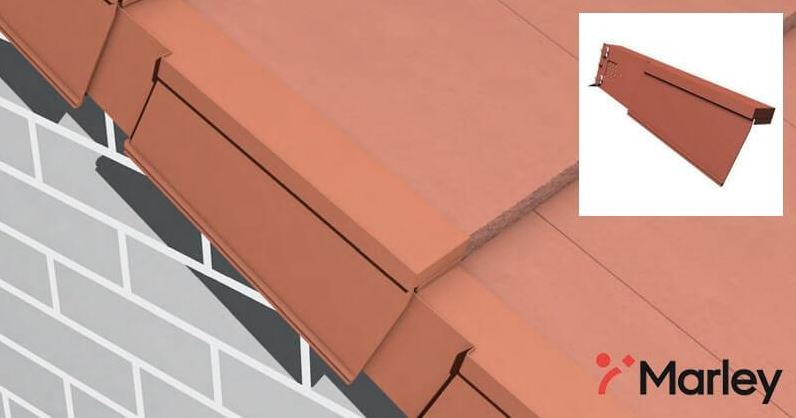
In recent times we’ve noticed a growing demand for modern interlocking clay and concrete tiles and slates, as housebuilders and contractors look for a time-saving alternative to traditional tiles.
Stuart Nicholson, roof systems director at Marley, recently discussed this increasing demand, he said “we are increasingly seeing interlocking plain tiles specified on high-end housing developments. This may be because using the tile gives the premium appearance of a plain roof tile at a lower cost, allowing developers to maintain a high internal specification for kitchens, bathrooms and quality fittings and fixtures, which can be a big selling point in a competitive market.”
In the past, while there’s been a great deal of attention paid to the appearance of interlocking tiles, there’s been a lot more focus on the function rather than the aesthetics of dry verges. However, dry verges are of course very important to the overall look of the roof, this is particularly true since the introduction of BS 5534 has reduced the use of mortar. Up until now, most dry verges available on the market have been quite bulky and large in comparison to the tiles but not any more thanks to Marley!
In response to increasing housebuilder demand, Marley have developed a brand new dry verge that has been specifically designed to complement the plain tile aesthetic and exceed all of the requirements of BS 8612. Their new Ashmore dry verge has a much smaller footprint in comparison to the tile than other existing products and offers a sleeker appearance, yet still has the in-built features that make it easier to fix to British Standards. The Ashmore dry verge is supplied in individual units, rather than a continuous verge, so contractors can easily create a traditional stepped verge appearance.
A key consideration in the design of this new product was weather performance. One of the most common problems with dry verges is water run-off. If the verge isn’t designed with features to help disperse the water away from the gable end wall, it can cause gable end staining. This is very unsightly and can lead to degradation of the mortar joints. Marley’s new dry verge has been designed to prevent this – with multiple drainage channels and an angled underside wall to ensure any rain is taken away from the brickwork / bargeboard.
Nicholson said “Building practices have also changed and our own investigations show that, these days, the majority of dry verges end up being fixed with the gutter already in place, which isn’t always in line with manufacturer instructions. To make it easier to install, our Ashmore dry verge includes a quick starter verge fixing method, which gives contractors a simple, yet robust way of securing the first verge unit. The dry verge also includes other in-built features, such as extra nail holes and an internal rail system, to make it quicker and easier to fit to BS 8612 and BS 5534 requirements.”
To find out more about Marley’s range of dry verges, email sales@roofgiant.com.